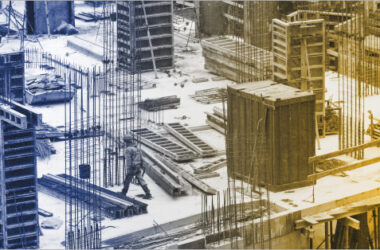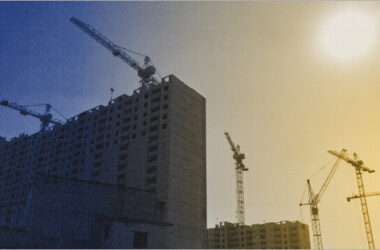An Erection All Risk Policy provides coverage for any loss or damage that may occur during the erection or installation of a project. This policy is designed to protect the interests of the contractor, owner, and any other parties involved in the project. It covers various risks such as theft, fire, natural disasters, and other unforeseen events.
The policy covers all types of projects, including industrial, commercial, and residential construction projects. It is especially useful for large-scale projects that involve complex machinery and equipment. The policy covers the cost of repairing or replacing damaged equipment and machinery, as well as any other losses that may occur during the erection process.
It provides peace of mind to all parties involved in a construction project. It ensures that any unforeseen events that may occur during the erection process are covered, and the project can be completed without any financial setbacks.
Overview of Erection All Risk Policy
Erection All Risk Insurance is a type of insurance policy that provides coverage to the insured for any loss or damage that occurs during the erection or installation of machinery, plants, or structures. This policy is designed to provide protection to the insured against unforeseen events that may cause damage or loss to the property being erected or installed.
The purpose of an Erection All Risk Insurance is to provide comprehensive coverage to the insured against any loss or damage that may occur during the erection or installation process. This policy covers the risks associated with the construction process, including theft, fire, natural disasters, and third-party liability.
Scope of Coverage
The Erection All Risk Insurance offers a wide range of entities, including contractors, builders, and property owners. The policy covers the risks associated with the erection or installation of machinery, plants, or structures, including any damage or loss that may occur during the construction process.
The policy also covers the risks associated with the testing and commissioning of the property being erected or installed. This includes any damage or loss that may occur during the testing and commissioning process.
In addition, the policy provides coverage for any damage or loss that may occur during the maintenance or repair of the property being erected or installed.
Overall, the Erection All Risk Insurnace provides comprehensive coverage to the insured against any loss or damage that may occur during the erection or installation process. It is an essential policy for any contractor, builder, or property owner who is involved in the construction process.
Policy Coverage
An Erection All Risk Insurance provides coverage for the construction and erection of a project, including the machinery and equipment used in the process. The policy covers various risks that may arise during the construction or erection process, such as accidental damage, theft, and fire.
Covered Risks
The Erection All Risk Insurance covers a range of risks that may occur during the construction or erection process. These risks include:
- Accidental damage to the project or equipment
- Fire or explosion
- Natural disasters such as earthquakes, storms, and floods
- Theft and vandalism
- Damage caused by faulty design, materials, or workmanship
- Damage caused by human error or negligence
Exclusions
There are certain risks that are not covered under the Erection All Risk Insurance. These exclusions may vary depending on the insurance provider, but typically include:
- Damage caused by war or terrorism
- Damage caused by nuclear radiation or contamination
- Damage caused by wear and tear or gradual deterioration
- Damage caused by intentional acts or gross negligence
- Damage caused by faulty design or materials that were known prior to the policy inception
It is important to carefully review the policy exclusions to ensure that the project is adequately covered.
Extensions and Endorsements
The Erection All Risk Insurance may offer additional coverage through extensions and endorsements. These may include:
- Delay in start-up coverage, which provides protection against financial losses due to project delays
- Third-party liability coverage, which protects against claims from third parties for bodily injury or property damage
- Professional indemnity coverage, which protects against claims arising from errors or omissions in design or advice
Extensions and endorsements can be customized to meet the specific needs of the project and provide additional protection beyond the standard policy coverage.
In summary, an Erection All Risk Insurance provides comprehensive coverage for the construction or erection of a project, including machinery and equipment. The policy covers a range of risks and can be customized through extensions and endorsements to meet the specific needs of the project. It is important to review the policy exclusions and ensure adequate coverage to protect against potential losses.
Eligibility and Underwriting
Eligible Projects
Erection All Risk Insurance is designed to cover a wide range of construction projects, including but not limited to:
- Civil engineering projects such as roads, bridges, and tunnels
- Industrial projects such as power plants, refineries, and factories
- Commercial projects such as shopping centers, hotels, and office buildings
- Residential projects such as apartments and condominiums
It is important to note that not all projects are eligible for an erection all risk policy. The eligibility criteria may vary depending on the insurance company and the specific project.
Underwriting Process
The underwriting process for an erection all risk policy involves a thorough evaluation of the project and its risks. The insurer will consider various factors such as the project location, construction materials, and the experience of the contractors involved.
The following information may be required during the underwriting process:
- Project plans and specifications
- Contractor qualifications and experience
- Construction schedule and timeline
- Project budget and financing
Based on this information, the insurer will determine the coverage and premium for the policy. It is important to note that the premium for an erection all risk policy can be higher than other types of insurance due to the high risk involved in construction projects.
In conclusion, an erection all risk policy is a comprehensive insurance policy that provides coverage for a variety of construction projects. Eligibility criteria and underwriting processes may vary depending on the insurer and the specific project.
Claims and Settlement
Notification of Loss
In the event of any loss or damage covered under the erection all risk policy, the insured must immediately notify the insurer. The notification should include details of the loss or damage, the policy number, and the insured’s contact information. Failure to notify the insurer promptly may result in a delay or denial of the claim.
Claim Assessment
Upon receipt of the notification, the insurer will appoint a surveyor to assess the extent of the loss or damage. The surveyor will investigate the cause of the loss or damage and determine the amount of compensation payable under the policy. The insured must provide all necessary information and assistance to the surveyor to facilitate the assessment process.
Settlement and Payment
Once the claim assessment is complete, the insurer will issue a settlement offer to the insured. The settlement offer will include the amount of compensation payable under the policy, less any deductible or excess applicable. If the insured accepts the settlement offer, the insurer will make payment promptly. If the insured disagrees with the settlement offer, they may negotiate with the insurer or seek legal recourse.
The EAR policy provides comprehensive coverage for loss or damage to the insured’s property during the erection or installation process. The claims and settlement process are designed to be efficient and transparent, ensuring that the insured receives fair compensation for any covered loss or damage.
Policy Terms and Conditions
Duration of Coverage
The EAR policy provides coverage for a specific period, which is determined at the time of policy issuance. The duration of coverage can vary depending on the nature of the project and the policyholder’s requirements. It typically starts from the date of commencement of work and ends on the date of completion of the project or the expiry of the policy, whichever is earlier. In some cases, the policy can be extended beyond the initial period by paying an additional premium.
Policy Limits and Deductibles
The policy limits and deductibles are crucial aspects of an EAR policy. The policy limits refer to the maximum amount that the insurer will pay in case of a claim. The limits can vary depending on the nature of the project, the type of coverage, and the policyholder’s requirements. Similarly, the deductible is the amount that the policyholder must pay before the insurer starts covering the claim. The deductible can also vary depending on the policy terms and conditions.
Premium Calculation
The premium for an erection all risk policy is calculated based on various factors such as the nature of the project, the type of coverage, the duration of coverage, and the policy limits and deductibles. The premium can vary depending on the risk associated with the project and the policyholder’s requirements. The insurer will assess the risk associated with the project and determine the premium accordingly. The policyholder can negotiate the premium with the insurer to get the best possible deal.
In summary, the erection all risk policy has specific terms and conditions that must be understood before purchasing the policy. The policyholder must carefully review the policy limits, deductibles, and premium calculation to ensure that the policy meets their requirements. The duration of coverage is also an essential aspect of the policy, and the policyholder should ensure that it covers the entire project period.
Risk Management
When it comes to an erection all risk policy, risk management is a crucial aspect that cannot be overlooked. This policy provides coverage for various risks that may arise during the erection or installation of machinery, equipment, or structures. To ensure that the policyholder is adequately protected, it is important to assess the risks involved and take necessary measures to prevent any potential losses.
Risk Assessment
The first step in risk management is to conduct a thorough risk assessment. This involves identifying the potential risks that may arise during the erection or installation process. Some of the common risks that may be covered under an EAR policy include:
- Fire and explosion
- Natural disasters such as earthquakes and floods
- Damage to machinery or equipment during transit or installation
- Third-party liability
Once the risks have been identified, the next step is to assess the likelihood and severity of each risk. This helps in determining the level of coverage required and the premium to be paid.
Loss Prevention
Loss prevention is another important aspect of risk management. This involves taking necessary measures to prevent any potential losses from occurring. Some of the common loss prevention measures that may be taken include:
- Proper training of personnel involved in the erection or installation process.
- Regular maintenance and inspection of machinery and equipment
- Use of safety equipment and protective gear
- Implementation of safety protocols and procedures
By taking these measures, the policyholder can minimize the likelihood of any potential losses and ensure that they are adequately protected under the policy.
In conclusion, proper risk management is essential for anyone who holds an EAR policy. By conducting a thorough risk assessment and implementing necessary loss prevention measures, policyholders can ensure that they are adequately protected against any potential losses that may arise during the erection or installation process.
Conclusion
An erection all risk policy is a must-have insurance policy for any construction project that involves the erection and installation of machinery, equipment, or structures. It provides comprehensive coverage against a wide range of risks and perils, tailored to the specific needs of the project, and offers peace of mind to all parties involved in the project.








